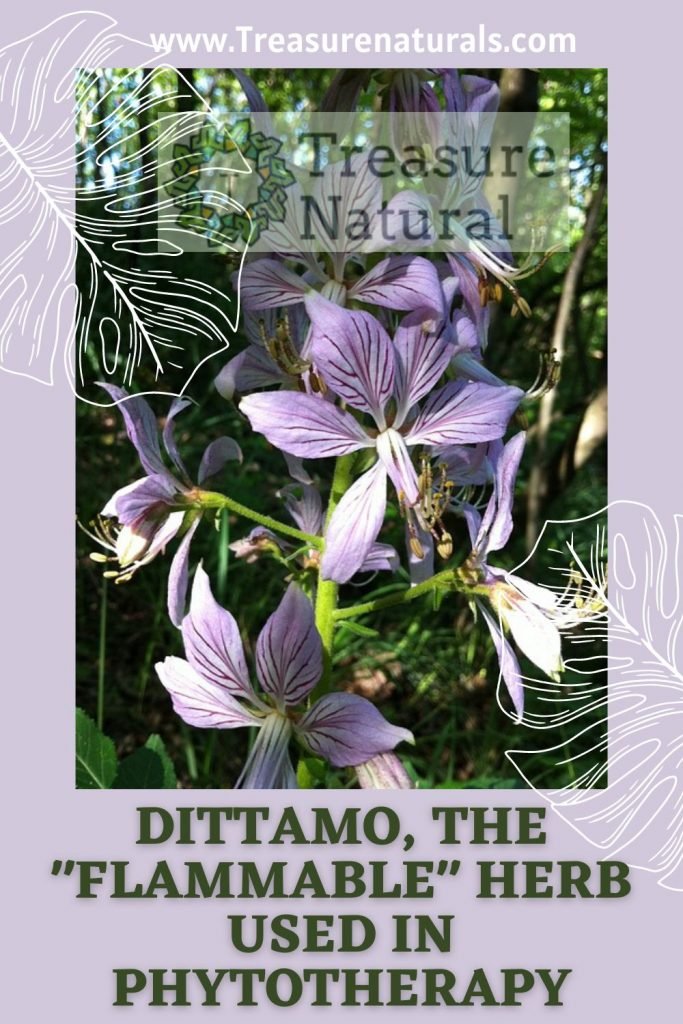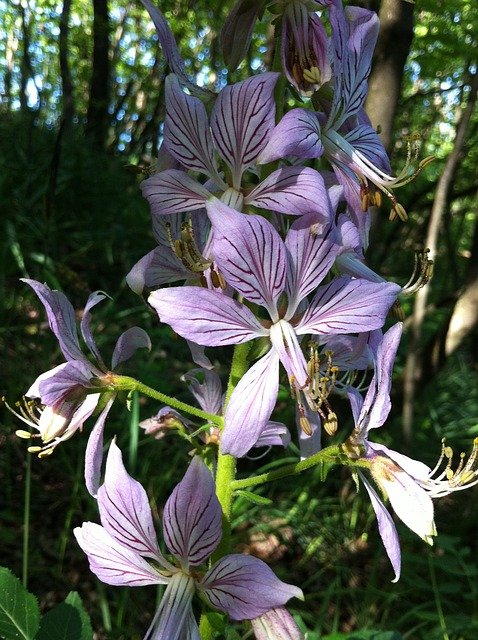
Today we are talking about the dittamo, a medicinal plant already known in ancient Greece widely used in phytotherapy but also to flavor liqueurs and perfume beauty products.
Dittamo: what it is
Dictamus (Dictamnus albus) is a spontaneous and aromatic perennial plant belonging to the Rutaceae family.
It is also called frassinella, because the shape of its leaves closely resembles that of the ash tree, and limonella since its leaves, if rubbed, give off an intense scent very similar to the citrusy one of lemon.
Its main feature, known since ancient times, is that it catches fire if placed near a flame. This happens due to the flammability of the essential oils contained in its flowers.
Features
It is a small shrub, broad-leaved and deciduous, 30 (60) -100 (120) cm tall, strongly aromatic and which normally blooms between May and June.
Let’s see more specifically the various parts:
- root: fleshy white in color
- stems: erect, generally simple, lignified at the base, and at the top endowed with numerous simple hairs and black glandular hairs
- leaves: spiraled; the upper ones have 3-5 pairs of large oval segments, 2-6 cm long, dark green, leathery and sprinkled with translucent and indented spots at the margin
- flowers: they are composed of 5 white-pink petals, veined with purple, attenuated at the base. Up to 3 cm long, they have numerous black glands. $ petals are facing up and one facing down
- fruit: a glandular coccarium of about 1 cm, formed by 5 cuspidate carpels which, when ripe, divide into a star
Habitat
The species is present in Europe, in the temperate zones of Asia, in Siberia and in the Caucasus.
In Italy it is quite rare: it is found in sunny and arid woods, at hilly altitude, where oaks and chestnuts usually thrive. Vegeta between clearings and bushes or at the edge of the paths.
Etymology
The name derives from the Greek ‘ diktamnos ‘, a word composed of ‘ Dikte ‘ (name of a mountain on the island of Crete) and ‘ thamnos ‘, shrub.
Dittamus: cultivation
In addition to growing spontaneously, the dittamo is also cultivated as an aromatic herb and herbal remedy due to its aroma and its phytotherapeutic virtues.
Here are the most favorable conditions to make it grow well.
- Ground. It prefers chalky, clayey and arid soils, better if well drained.
- Exposure. It loves full sun areas, but also grows in partial shade. It does not fear the cold and resists heat well. It can grow up to 1500-2000 m of altitude.
- Irrigation. It does not need large quantities of water, rainwater may be sufficient. In the driest months it is better to water it a few more times.
- Fertilization. Not necessary. To give the plant more vigor, a slow release fertilizer can be administered once a month, in spring and summer.
- Multiplication. It is propagated by sowing in February, in a protected seedbed, or in the month of April in the open ground.
- Collection. The leaves are harvested during flowering and then used fresh or dried. Drying must take place in a dark and ventilated place.
- Diseases and parasites. It fears the attack of aphids, which can be easily countered with natural pesticides.
Dittamo: ownership
Already in ancient times, the dictamus was used to treat ” the stomach, gastric ulcers, problems with the spleen, rheumatism and even infertility “.
Some important properties are still recognized today. In full compliance with European legislation, the dictamus is recognized as traditional medicine and its use as an aromatic herb is allowed.
Here are its properties:
- diuretic
- digestive
- expectorant
- stimulating
- febrifuge
- antispasmodic
- antihelminthic
- astrigent
- calming
- antifungal
- antibacterial
With a high quantity of antioxidants, it stimulates the appetite in convalescents, promotes digestion and improves diuresis. It also counteracts fungal and bacterial infections.
Dittamo: uses
Due to its properties, it is used against stomach spasms and cramps, anorexia, chlorosis, spastic dysmenorrhea, scrofula, stomatitis.
For external use it is considered a stimulant of the peripheral circulation.
In the form of an infusion it is useful for treating colds, infections of the mouth and teeth, digestive problems, menorrhoea, diabetes, obesity, kidney and liver problems.
It is also applied as a poultice for head pain, rheumatism and sores.
For centuries the monks have used it for the preparation of liqueurs and digestives. On the market it is found mainly in the form of herbal tea, with digestive and toning properties.
Other uses of the dictamus
Dittamo essences are also used to flavor liqueurs (Vermouth and Martini Dry) and perfumes.
Due to its beautiful and fragrant flowers it is often also cultivated as an ornamental plant.
Esotericism linked to the dictamus
In ancient times it was used as a divination incense and to see spirits.
Dittamo: use in the kitchen
Due to its too intense scent, the dittamo has not met with great success in the gastronomic world and in the kitchen in general. However, it can be used to flavor dishes with a neutral flavor such as bechamel or potatoes.
Its particular flavor goes well with game and, unexpectedly, binds very well with desserts.
The leaves and inflorescences are used.
Contraindications of the dictamus
None in particular, with the exception of hypersensitivity to the substance by the individual. Scholars have also stressed that it is good to use small quantities, especially in the case of pregnancy or in the case of children.
Curiosities about the dittamus

In ancient times it was considered a symbol of love and passion. Young people climbed the steep cliffs and gorges of Crete to collect it and give it to the girls they love.
The large quantity of essential oils emitted by the oily glands of the dictamus saturates the atmosphere of the warm summer evenings and easily catches fire in contact with a flame. For this reason its English and French names are respectively “burning bush” and “buisson ardent”.
The wild Cretan dictamus is classified as “rare” and is protected by European law so that it does not become extinct. Currently, its cultivation in Greece focuses on Embaros and the surrounding villages, south of Heraklion.
Dittamus and Harry Potter
In the fantasy novel “Harry Potter and the Half Blood Prince”, the term dittany appears, to indicate a substance capable of healing scars if applied quickly enough after a cut.






